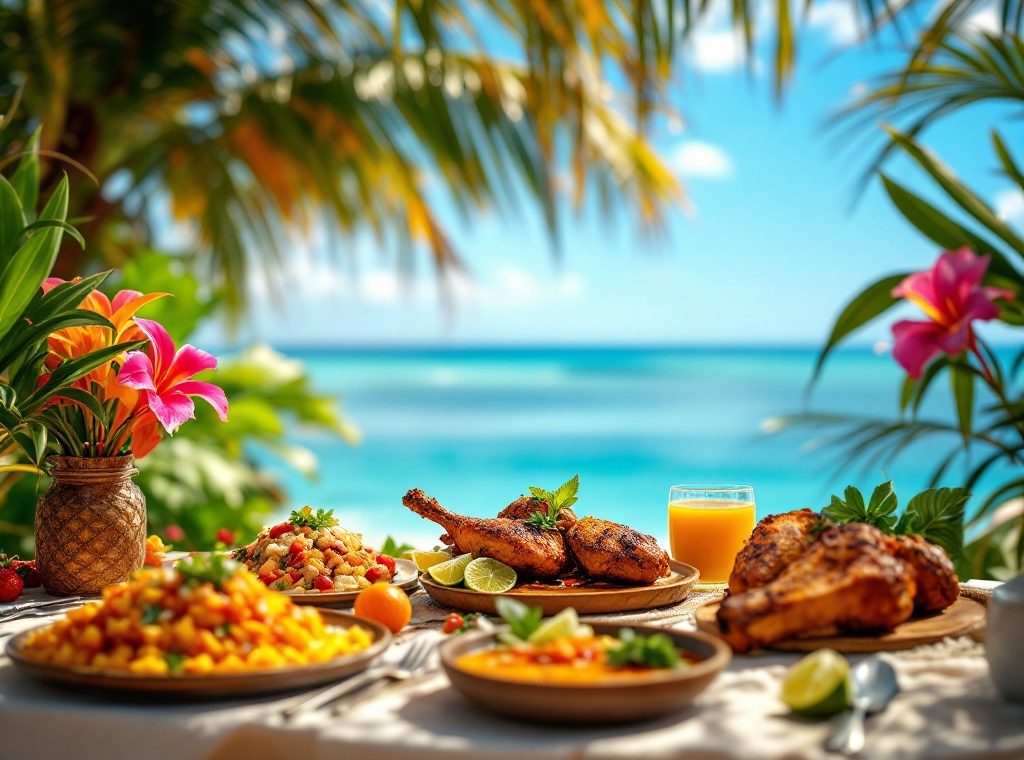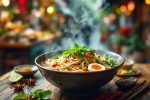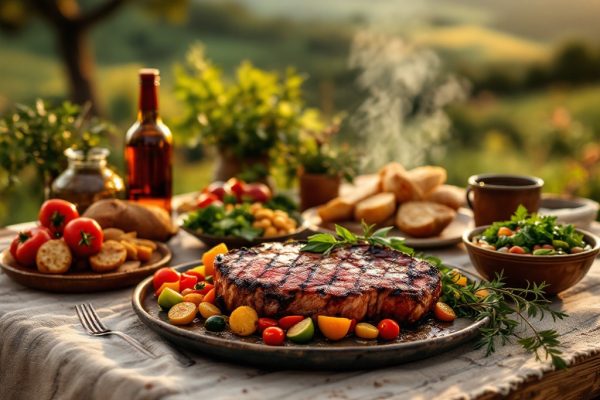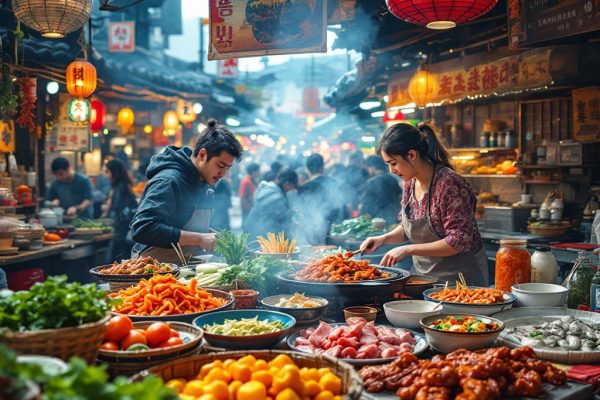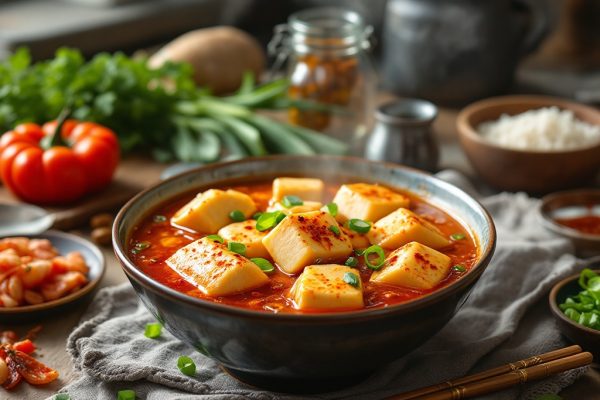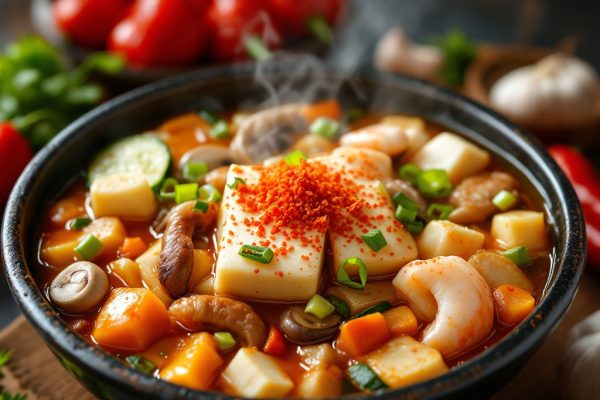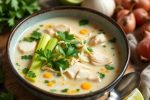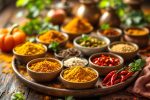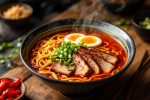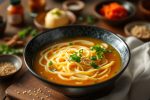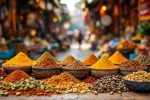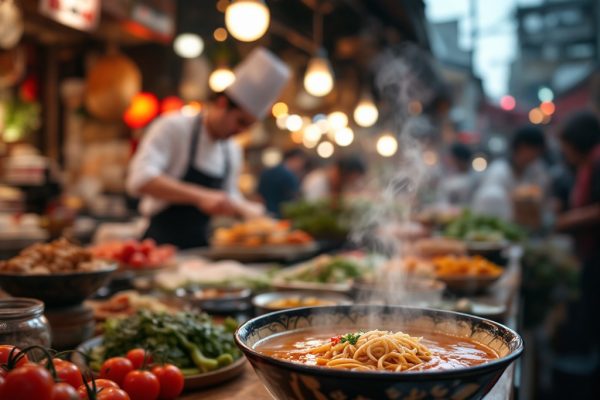Caribbean Cuisine: What Delicacies Are Hidden on the Pacific Ocean
Embark on a culinary adventure through the Caribbean, a vibrant tapestry of flavors woven from African, European, Indigenous, and Asian influences. From the fiery kick of jerk chicken to the refreshing tang of ceviche, discover how indigenous traditions and fresh seafood create a truly unique dining experience. Explore the rich history and diverse cooking techniques of this culinary melting pot, and uncover the secrets behind dishes like callaloo soup and ackee and saltfish. Dive into the delicious fusion of Caribbean cuisine and start your flavorful journey today!
Important information
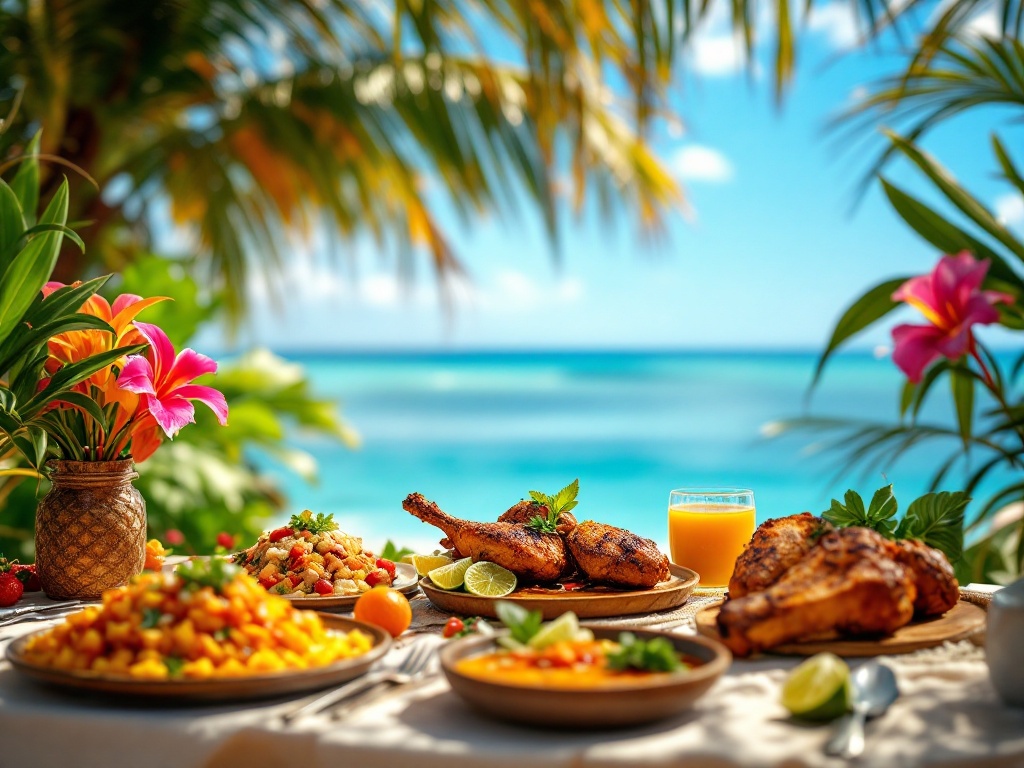
- Caribbean cuisine is a fusion of African, European, Indigenous, and Asian influences, creating a unique blend of flavors.
- Fresh seafood, tropical fruits, and spices like allspice, thyme, and scotch bonnet pepper are key ingredients.
- Indigenous peoples (Taino, Arawak, and Carib) contributed staples like cassava, corn, and sweet potatoes, along with traditional cooking methods.
- Grilling, stewing, and frying are common cooking techniques, reflecting the region’s diverse cultural heritage.
- Caribbean and Pacific Island cuisines share similarities due to trade and migration, resulting in a unique culinary fusion.
Caribbean Cuisine: A Melting Pot of Flavors
Caribbean cuisine bursts with vibrant flavors, a delicious fusion of African, European, Indigenous, and even Asian influences. This melting pot of culinary traditions creates a truly unique dining experience. Fresh seafood is a cornerstone of many dishes, complemented by an abundance of tropical fruits and aromatic spices like allspice, thyme, and the fiery scotch bonnet pepper. Cooking techniques are just as varied, ranging from grilling and stewing to frying, reflecting the region’s rich history, diverse geography, and its vibrant story of cultural exchange and adaptation.
Influences from Africa, Asia, Europe, and Indigenous Cultures
Jamaican cuisine is a vibrant tapestry woven from various cultural threads. African heritage is evident in dishes like callaloo soup and the national dish, ackee and saltfish. Asian influences add a unique zest with fragrant curries and spices. European traditions introduced ingredients like sugarcane and wheat, while indigenous Taino culture provided staples such as cassava, corn, and an array of fruits and vegetables. This fusion of flavors creates a truly unique culinary experience.
African Heritage
Callaloo soup and the national dish of ackee and saltfish are prominent examples of African influence.
Asian Influences
Fragrant curries and spices add a unique zest, showcasing the impact of Asian flavors.
European Traditions
Ingredients like sugarcane and wheat were introduced through European culinary traditions.
Indigenous Taino Culture
Staples such as cassava, corn, and various fruits and vegetables are contributions from the indigenous Taino culture.
This fusion of flavors creates a truly unique culinary experience.
Indigenous Heritage and Culinary Legacy
Caribbean food’s distinct character is largely thanks to the islands’ first inhabitants: the Taino, Arawak, and Carib peoples. These groups cultivated staples like cassava, maize, and sweet potatoes, ingredients still enjoyed today. Their knowledge of local plants and herbs infused the cuisine with unique flavors. Indigenous fishing and preservation methods, especially for seafood, further enriched this culinary heritage. Even the Taino “barbacoa,” a wooden frame for smoking meat, foreshadowed modern barbecue techniques.
Indigenous Influences
These indigenous traditions form the foundation of many Caribbean dishes. Cassava and corn remain key ingredients.
Cultural Fusion
The vibrant use of peppers and spices reflects the Arawak and Carib influence. This fusion created a unique culinary tapestry.
The Influence of Taino People, Arawak, and Carib Indians
Indigenous peoples like the Taino, Arawak, and Carib significantly influenced Caribbean cuisine. They introduced staples such as cassava, corn, and sweet potatoes. Their cooking techniques, including barbecuing and the use of spices, shaped the region’s culinary traditions. These contributions remain fundamental to many modern Caribbean dishes.
Island Cuisine and the Pacific Ocean Connection
Pacific Island and Caribbean cuisines share surprising similarities, reflected in dishes like jerk chicken, rice and peas, and conch fritters. This delicious fusion arises from a blend of indigenous traditions with African, European, and Asian influences. Ingredients such as coconut, allspice, and scotch bonnet peppers create vibrant and unique flavors.Caribbean food traditions crossed the ocean through trade routes and migration, introducing ingredients like plantains, yams, and various spices to the Pacific. This exchange created a distinctive Pacific-Caribbean culinary fusion.Fresh, local seafood is central to this cuisine. Dishes often feature snapper, grouper, mahi-mahi, shrimp, crab, and conch. Traditional grilling and stewing methods preserve the natural flavors, while the emphasis on local ingredients promotes sustainability.
Culinary Adventure Across the Ocean
The Caribbean and Pacific islands, sharing culinary techniques and ingredients, have created a unique fusion cuisine. Caribbean cuisine, heavily influenced by the sea, offers delicacies like grilled fish and conch fritters, with ceviche becoming increasingly popular. Pacific islanders utilize ingredients such as taro, breadfruit, and coconut milk. This exchange enriches both regions’ culinary landscapes, adding a diverse layer to their food experiences. Caribbean spices may enhance a Pacific dish, while Pacific staples elevate a Caribbean classic, creating a delicious culinary adventure.
Caribbean Cuisine
- Features grilled fish and conch fritters,
- Includes ceviche,
- Emphasizes seafood.
Pacific Island Cuisine
- Utilizes taro, breadfruit, and coconut milk,
- Shares techniques with Caribbean cuisine,
- Contributes to a unique culinary fusion.
Sustainability and Indigenous Ingredients
Caribbean cuisine is a testament to sustainability, utilizing indigenous ingredients to protect both the environment and cultural heritage. Popular choices like callaloo, a leafy green, and cassava, a starchy root, form the base of many dishes. This emphasis on local ingredients strengthens regional economies and offers a delicious and responsible approach to dining. However, maintaining a consistent supply of these ingredients can be a challenge.
Traditional Techniques and Fresh Ingredients
Caribbean food is an explosion of flavors, thanks to the emphasis on fresh ingredients. Traditional cooking methods, like grilling over an open flame, impart a smoky char, while slow-simmered stews develop rich, complex tastes. For satisfyingly crispy textures, frying is the go-to method. A Caribbean staple, jerk seasoning, is a vibrant spice blend often used as a dry rub for grilled meats, adding another layer of deliciousness.
Jerk Seasoning and Spice Rubs
Jerk seasoning, a vibrant Jamaican spice blend, delivers a fiery kick from Scotch bonnet peppers while offering a complex savory depth thanks to allspice, thyme, and other aromatic herbs and spices. Commonly used to marinate chicken, pork, or vegetables, jerk’s flavors intensify when grilled or smoked, creating a truly delicious, smoky dish.
Seafood Mastery in Caribbean Cuisine
Caribbean cuisine is famous for its delectable seafood dishes. Fresh catches like snapper, grouper, lobster, conch, and shrimp are abundant in the region, providing key ingredients for many local specialties. Caribbean cooks expertly blend local spices and grilling techniques to create distinctive flavors.
Popular Seafood Dishes
- Ceviche: a citrus-marinated fish dish, often made with snapper or other local white fish.
- Grilled Mahi-Mahi: a firm, flavorful fish, often seasoned with Caribbean spices and grilled to perfection.
- Rich Coconut Milk Curries: featuring fresh seafood and a blend of aromatic spices, these curries offer a completely different culinary experience.
Distinctive Flavors
While some dishes, like ceviche, emphasize bright citrus notes, others offer a completely different experience. This diversity is what makes Caribbean food so unique.
Ceviche and Grilled Mahi Mahi
Ceviche, a refreshing seafood dish, features raw fish “cooked” in citrus juices, rather than heat. Another Caribbean favorite, grilled mahi-mahi, is often prepared over an open fire. Both dishes showcase the region’s fresh seafood and frequently incorporate local ingredients like conch, adding a distinctive Caribbean flair.

